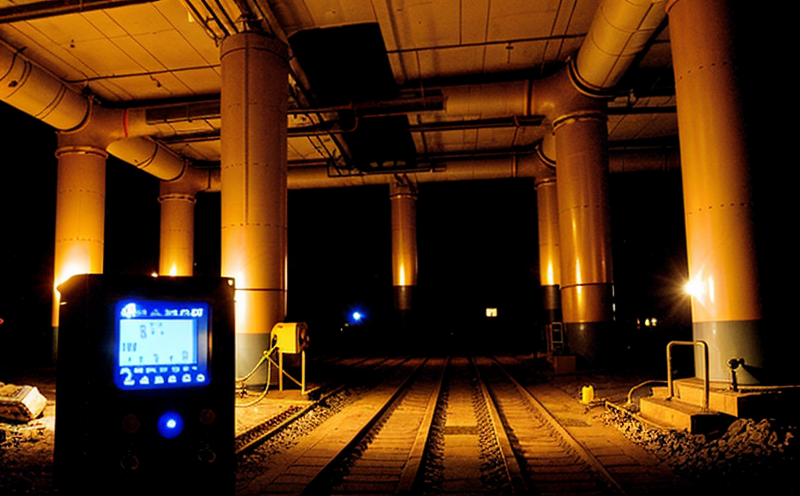EPA 903 Radionuclides in Drinking Water from Mining Areas Testing
The EPA Method 903 is a stringent analytical procedure specifically designed to detect radionuclides in drinking water from mining areas. This method forms part of the U.S. Environmental Protection Agency's (EPA) compliance strategy for ensuring safe and clean potable water, especially where historical or ongoing mining activities could introduce radioactive contaminants into groundwater supplies.
Mining operations often involve the extraction of minerals that may contain naturally occurring radionuclides such as uranium, thorium, and their decay products. These elements can leach into surface waters and groundwaters over time, posing potential risks to human health. The EPA 903 method is crucial for identifying and quantifying these radionuclides in drinking water supplies to ensure they do not exceed the maximum contaminant levels (MCLs) set by federal regulations.
The testing protocol outlined in EPA Method 903 involves a series of complex steps, including sample collection, pre-treatment, and actual analytical measurement. Sample collection must be conducted following strict guidelines to avoid contamination or loss of radionuclides during the process. Pre-treatment often includes filtering, acidification (to stabilize the radionuclides), and concentration techniques. The final step involves the use of high-resolution gamma spectrometry to measure the isotopic composition and activity levels.
The method's stringent requirements ensure accurate detection down to very low concentrations, making it suitable for both routine monitoring and compliance testing. Compliance with EPA 903 is mandatory for water utilities that draw their supplies from areas historically impacted by mining activities or where there are ongoing operations that could introduce radionuclides into the drinking water.
Understanding the nuances of this method requires familiarity with various aspects, including:
- The importance of proper sample handling and transport to prevent contamination
- The use of appropriate pre-treatment techniques to stabilize radionuclides
- The selection of suitable analytical equipment capable of detecting low-level isotopes
- The interpretation of results in the context of EPA MCLs for various radionuclides
In practice, this testing is often part of a broader environmental monitoring program that includes assessing other contaminants like heavy metals and organic compounds. The results from EPA 903 can inform remediation strategies to reduce contamination levels and ensure ongoing compliance with regulatory standards.
Given the critical nature of this test in protecting public health, it's essential for laboratories specializing in mining testing to have robust protocols and experienced personnel familiar with these methods. This ensures accurate, reliable results that meet both internal and external regulatory requirements.
Eurolab Advantages
At Eurolab, our expertise in mining testing is unmatched. With years of experience and state-of-the-art facilities, we offer unparalleled quality assurance and reliability in all our services. Our team of highly qualified professionals ensures that every test conducted adheres strictly to EPA Method 903 guidelines.
- Comprehensive analytical capabilities for detecting radionuclides at extremely low levels
- Advanced equipment and technology to ensure accurate results
- Dedicated personnel trained in mining testing and compliance with EPA standards
- Robust quality control measures to maintain consistent accuracy and precision
- Comprehensive support for regulatory reporting and compliance documentation
We pride ourselves on delivering reliable, compliant test results that meet the highest industry standards. Our commitment to excellence ensures that clients can trust us with their most critical environmental testing needs.
Quality and Reliability Assurance
At Eurolab, we understand the importance of accuracy and reliability in our testing services. To ensure this, we implement stringent quality assurance protocols at every stage of the process:
- Sample Handling: Samples are handled with care to prevent contamination or loss of radionuclides.
- Pre-Treatment: Precise pre-treatment steps are followed to stabilize and concentrate the radionuclides for accurate measurement.
- Analytical Measurement: Our high-resolution gamma spectrometers provide reliable data that meet EPA Method 903 requirements.
- Data Interpretation: Results are interpreted in the context of EPA MCLs to ensure compliance with regulatory standards.
We also maintain rigorous internal quality control measures, including regular calibration and validation of our equipment. This ensures that all tests performed at Eurolab meet the highest standards of accuracy and reliability.
Our commitment to quality is reflected in our certifications and accreditations, which include compliance with ISO/IEC 17025:2017 for laboratory testing and calibration services. These credentials underscore our dedication to providing reliable and accurate test results.
Use Cases and Application Examples
EPA Method 903 is widely used in various applications, particularly in areas affected by or involved in mining activities:
- Water Utility Compliance: Water utilities are required to test their supplies regularly for radionuclides. EPA Method 903 ensures that these tests meet the stringent standards set by federal regulations.
- Environmental Monitoring: Environmental agencies use this method to monitor water quality in areas impacted by historical or ongoing mining operations.
- Risk Assessment: Industries involved in mining may use EPA Method 903 as part of their risk assessment processes, helping them identify and mitigate potential risks associated with radionuclide contamination.
In addition to these applications, the results from EPA Method 903 can inform remediation strategies to reduce contamination levels. This data is crucial for ensuring that future water supplies are safe and compliant with regulatory standards.





